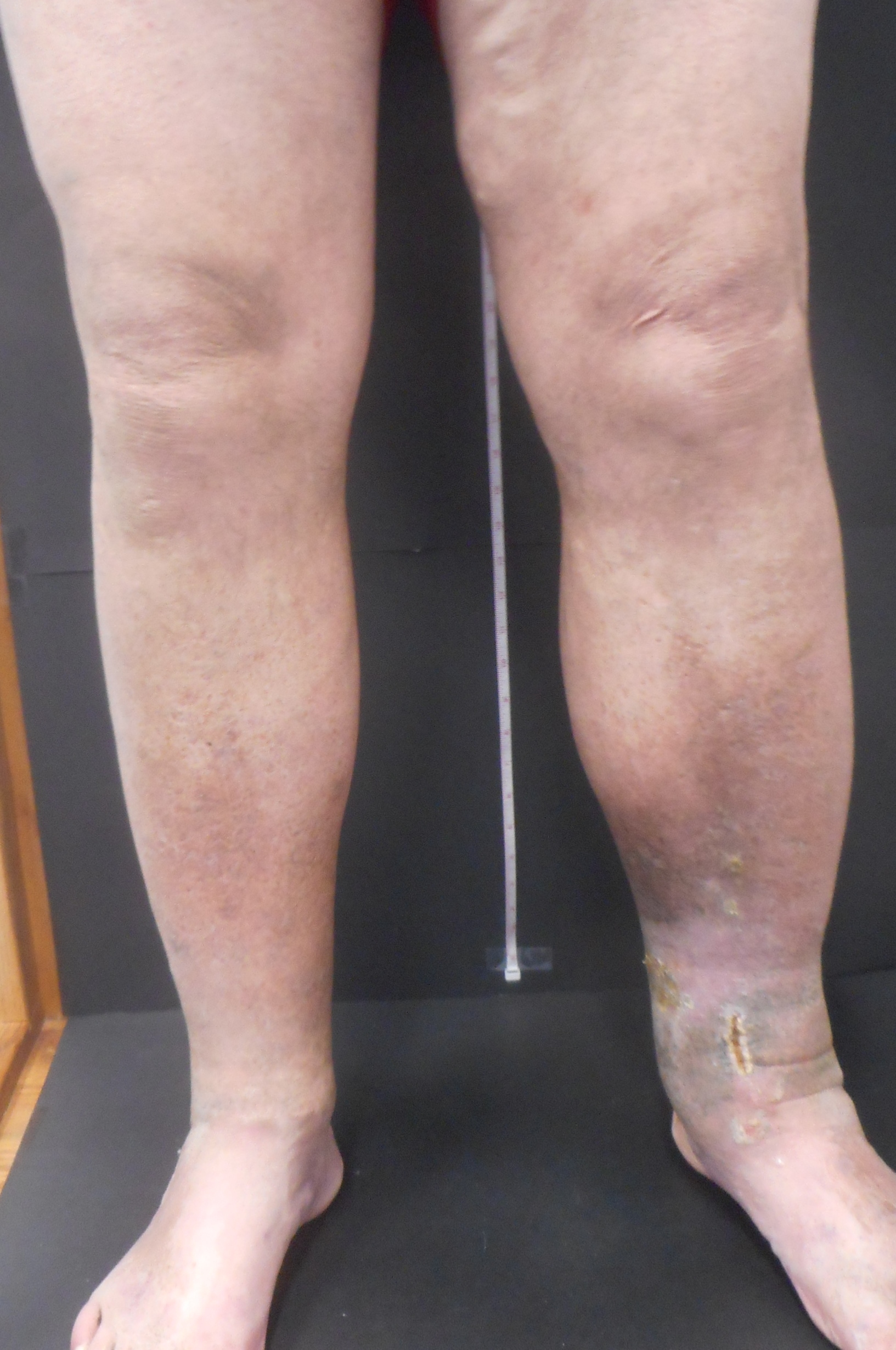May-Thurner Syndrome, very simply put, is a blockage of a vein.
It occurs when the left leg vein is compressed by the right leg artery. The problem occurs where the right and left leg veins join together to form the Inferior Vena Cava, the main vein that goes to the heart. The veins go between the arteries and the backbone and can get “pinched” between the two. This occurs at about the level of the belly button. This can cause limitation of out flow of the blood of the left leg as it tries to return to the heart. This isn’t enough to affect the heart filling, but is enough to cause problems in the leg. We used to think it only involved the left leg, but now we know compression can occur at other areas of both legs.
The symptoms of May-Thurner syndrome are identical to those of other vein disorders, and can be present in addition to the other vein problems. That’s why it is often over looked.
Symptoms of May-Thurner Syndrome
- Varicose veins
- Varicose veins in the lower buttocks, back of the upper thigh and in the inner upper thigh or in the pubic or groin area
- Heaviness, aching or swelling in the legs
- Persistent pain in the legs, often worsening through the day
- Leg swelling and brownish discoloration
- Skin inflammation and venous ulcers
May-Thurner Syndrome and DVT
May-Thurner Syndrome may cause the outflow of blood to be so sluggish that DVT occurs. This stands for Deep Vein Thrombosis and means a clot in the deep vein. This can cause a sudden complete blockage of the outflow. This usually causes sudden pain and swelling. Infrequently, the blood clot can break free from its initial location and travel to the lung and cause a potentially life-threatening event known as a pulmonary embolism or PE. PE requires emergency medical treatment to manage the clot and it could be fatal.
Many years ago May-Thurner was only suspected in patients with left leg DVT. It was found after dissolving the clot. Much of the literature that you read will be about this. Being able to find it before clotting occurs is much more recent.
It should be suspected when blood clots in the legs occur for no reason, or blood clots or phlebitis happen repeatedly, especially in the left leg.
Pulmonary embolism with no origin of the clot confirmed raises suspicion of May-Thurner Syndrome.
The doctor has to have a high index of suspicion that it is there, and be diligent in trying to confirm it.
Diagnosing May-Thurner Syndrome
Diagnosing May-Thurner Syndrome and pinpointing the location of obstruction was previously very difficult and frequently inaccurate. Only a limited number of highly skilled ultrasound technicians with advanced vein training can find the blockages by ultrasound of the abdomen. Dr. Draughn and his Ultrasound team have trained with the world’s experts to be able to do this. This, however, is not the absolute most accurate study. The benefit of it is that it can be easily done in the doctor’s office and is inexpensive and easy to repeat for comparisons at different time intervals.
Intra-Venous Ultra Sound or IVUS is the state-of-the-art technology. It is much more sensitive than Venograms (contrast injection), CT scans, or MRI. It allows us to measure the size and shape of the veins precisely. IVUS is similar to heart catheterization except the risks are lower because the catheter is only in a vein and not in a high-pressure artery that can bleed severely, and is not going into a vital organ.
Treatment that Works
When symptoms have become disruptive to ones quality of life, and nothing else is working, it is time to consider this option.
If a blockage of 50 percent or more is found in the vein, the blockage is treated at the same time.
Treatment involves using a balloon to stretch open the compressed vein (angioplasty) and then placing one or more stents in the vein to keep it open. Dr Draughn has trained with several of the world’s experts in this as well.
Complete sedation or general anesthesia is usually required. If stenting is performed, there is usually pain in the back afterwards that can be treated with pain medications. It lasts for a few days to a week or two, but goes completely away.
The results of stenting are excellent. Pain and swelling are completely relieved in most and improved significantly in nearly all. 95% of stents are still open and functioning in 5 years.
The results are not quite as good if clotting has already become part of the situation. In this case, the stents may require repeat treatment to keep them open. Lifelong blood thinners are required. In this group, at the end of 5 years, 75 % are open and working.
If you have symptoms as listed above, and an ultrasound of the legs does not provide sufficient explanation, May-Thurner should be considered. Also if vein problems keep coming back repeatedly after treatment of the veins in the leg, May-Thurner Syndrome should be investigated.
Dr. Draughn is a leading expert in May-Thurner Syndrome, IVUS, and venous angioplasty and stenting. With our recent AAAHC office based surgical center accreditation; this is now done in our Charlotte office.
To schedule your vein assessment, contact Vein Specialists of the Carolinas at 704-861-2072 or 704-544-5245.
“All We Do Is Veins, All Day Every Day.”

